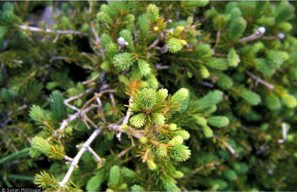The branches and roots of Engelmann spruce have been used to make cord and rope, by first shredding and pounding them.
Photo Credit: © Susan McDougall, USDA-NRCS PLANTS Database.
Picea engelmannii
Common Name: Engelmann spruce
Other Common Names: Columbian spruce, Engelmann's spruce, mountain spruce, silver spruce, white spruce
Plant Functional Group: Evergreen conifer
Class > Order > Family: Pinopsida > Pinales > Pinaceae
